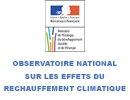AdaptFVR: Climate change impacts on emergency of Rift Valley fever carriers in Senegal: adaptation and strategy for a better management of pastoralism in Sahel
AdaptFVR: Climate change impacts on emergency of Rift Valley fever carriers in Senegal: adaptation and strategy for a better management of pastoralism in Sahel
CNES tele-epidemiology approach, applied to Rift Valley Fever (RVF) in Ferlo region in Senegal during 2003 season, allowed realizing dynamic maps of cattle exposure risk to RVF carriers by associating triggering factors such as rain events, carriers’ density (Aedes vexans and Culex poicilipes) and hosts’ presence (livestock). A risk map is in fact the result of cross between the hazard map (mosquitoes’ density) and the vulnerability map (camps and stockyards map). The hazard map is calculated by considering: (i) distribution of rainfall events (frequency and intensity), (ii) mosquitoes’ flight distance, (iii) their aggressiveness.
These dynamic maps can be daily realized starting from pluviometric data obtained in almost real time by TRMM mission (Tropical Rainfall Measuring Mission). The first purpose of this study is to validate dynamic risk maps which will be realized during 2009 wet season in Ferlo region in Senegal. In order to do that, a large field campaign will be conducted during which entomological measures and animal health surveys will be realized in control-stockyards. A statistical analysis will be made afterwards to compare the results obtained in these parks to those obtained by modeling.
Socio-economic surveys will be conducted in Barkedji region in order to replace our study in a more general context of needs and practices of local populations.
Concerning the climate aspect, it has been proved that the crucial factor in the elaboration of risk maps is pluviometry and its spatiotemporal variability. This project aims to study the impact of climate variability (from seasonal to low frequencies, including trends and climate changes) on pluviometry and therefore on risk forecast. A monthly statistic distribution is planned, starting from rainfall events and their incertitude, and will be available in a monthly report of seasonal forecast, rainfall distribution frequency and carriers’ presence risk maps. On a climate change regional scale, pluviometry forecasts and trends’ maps will be realized for the next 150 years, including the anthropogenic component. On the basis of all information and statistics here collected, we plan to make a study of the climate impact on the FVR carriers’ presence risks with the incertitudes related to the employed methods.
The forecast of cattle’s exposure to FVR carriers areas can therefore allow implementing adaptation strategies in order to mitigate climate impacts on a daily, seasonal and climate change scale.
For this purpose, a socio-economic study of pastoralism will be made in order to analyze the adaptation process in the management of pastoralism against forecasted climate risk on different spatiotemporal scales.
We aim to show how these risk maps – an original and innovative product – can contribute to implement health surveillance policies and be integrated in early warning systems.
| Coordinators |
Murielle LAFAYE (CNES) |
| Partnership |
Centre national d’études spatiales (CNES)
GAME (Groupe d’étude de l’atmosphère météorologique)
CNRS / Météo-France CNRM
Association Reflets
Centre de Suivi Ecologique (CSE)
Dakar-Sénégal, Direction de l’élevage (DIREL)
Dakar, Sénégal, Institut Pasteur de Dakar (IPD)
|
| Funding |
MEEDDM
|
| Budget |
175 000€ TTC
|




